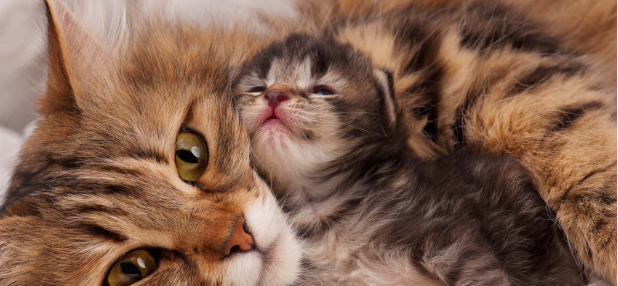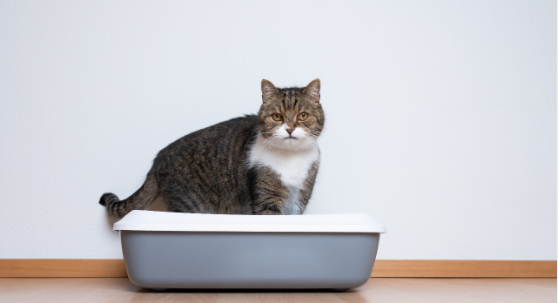Introducing Male Kitten to Female Cat
Bringing a new kitten into your household is an exciting experience, but it can also be stressful for your existing cat. Many pet owners wonder whether their female cat will accept a male kitten, and the answer depends on several factors. Before introducing a new kitten to your home, it is crucial to understand feline behavior and dynamics.
Cats are territorial animals, and they establish their own space within the household. Introducing a new kitten can disrupt the established hierarchy and cause tension between cats.
It is important to prepare yourself for the introduction process by researching how cats communicate with each other through body language, scent marking, and vocalizations. By understanding these communication methods, you can observe your cat’s behaviour and reactions to new stimuli accurately.
Keep in mind that each cat has its unique personality, so what works for one may not work for another. Be patient during the introduction process as it often takes time for cats to adjust to change.
The Importance of Understanding Feline Behaviour
Feline behaviour is complex but fascinating once you understand it. Cats are solitary hunters by nature, but they have adapted well to living in human households under certain conditions.
They have evolved complex communication methods that allow them to maintain social hierarchies while avoiding conflict. As mentioned earlier, cats are territorial animals that create boundaries within their environment; this includes their humans’ homes!
It’s essential for pet owners always to consider their resident cat(s) before introducing any new pets into their home since doing so could potentially upset the current balance of things. In fact, many behavioral problems may arise if cats are not introduced correctly – such as urine marking or aggression toward other pets or family members.
Before bringing any new pet (in this case -a male kitten) into your home, it’s essential to consider your resident cat(s) and understand their behaviour and dynamics. By doing so, you can take the necessary steps to make the introduction process as smooth as possible for all parties involved.
Understanding Feline Behaviour
Territorial Nature of Cats
Cats are territorial animals and they establish their own spaces within a household. Each cat has a preferred spot to sleep, play, and eat, and they will defend this space from other cats or pets.
This territorial nature can make introducing a new kitten to an existing cat a difficult process. The established cat may view the new kitten as an intruder and become aggressive toward it.
Cat Communication Methods
While cats are not known for being vocal animals, they do communicate through body language, scent marking, and vocalizations. One of the most common ways that cats communicate with each other is through scent marking. Cats have scent glands located on various parts of their bodies such as their paws and face, which they use to mark objects in their territory with their unique scent.
These scents help them identify familiar objects or animals in their environment. In addition to scent marking, cats also communicate through body language such as tail position or ear movement.
For example, when a cat’s ears are flat against its head and its tail is puffed up, it indicates that the cat is feeling threatened or angry. Similarly, purring can indicate happiness or contentment while growling can indicate aggression or fear.
Observing Your Cat’s Behaviour
Before introducing a new kitten to your female cat, it is important to observe your cat’s behavior and reactions to new stimuli. This will allow you to understand how your female cat communicates her feelings towards different situations so you can anticipate her reaction when introducing the male kitten.
For example, if your female cat becomes aggressive towards unfamiliar cats outdoors then she may not be receptive to a new kitten at home initially; while if she has previously lived with other pets successfully then there may be less potential for conflict between the two pets. By observing your cat’s behavior and reactions, you can better prepare for the introduction process and ensure a smoother transition for all pets involved.
Introducing a Male Kitten to a Female Cat
Best Practices for Introduction
Introducing a new kitten to an existing cat can be an exciting yet stressful time for both animals. As such, it is essential to follow best practices during the introduction process to ensure that the two cats can coexist peacefully in your home. One of the most critical steps when introducing a new kitten to your existing cat is to prepare your home adequately.
This means creating separate spaces for each cat, including litter boxes, food and water dishes, and sleeping areas. This allows each cat to have their own space, which is essential when managing territorial behaviour.
During the introduction process, it’s also important not to rush things. Take things slow and ensure that both cats are comfortable with each other’s presence before allowing them face-to-face interactions.
Preparing Your Home for Introductions
When preparing your home for introductions, setting up separate spaces is just one step. You’ll also need to consider how you’ll gradually introduce the new kitten’s scent and sound into your home environment. To do this, start by keeping the new kitten in a confined space such as a spare room or bathroom with its litter box, bed, toys, and food and water dishes.
Allow your existing cat access outside of this room so that they can sniff around outside of the door without any direct contact with the kitten. You can gradually get both cats used to each other’s presence by swapping bedding or blankets between them so they become familiar with one another’s scents before allowing any face-to-face interaction.
Introducing a male kitten to a female cat requires careful planning and patience on your part as their owner. By following these best practices and taking things slow during introductions you will set both cats up for success in developing positive relationships with each other over time.
Signs that Your Female Cat is Accepting or Rejecting the Male Kitten
When introducing a new kitten to your female cat, it is important to pay close attention to their behavior and interactions. Cats are highly territorial animals and can be possessive of their space, so it is normal for there to be some initial resistance when a new pet is introduced into the household. However, with patience and careful observation, you can determine if your female cat is accepting or rejecting the male kitten.
One common sign of rejection is hissing or growling. When your female cat feels threatened or uncomfortable around the male kitten, she may start making these sounds as a warning sign.
Additionally, hiding or avoiding contact with the kitten can also indicate rejection. If your female cat seems stressed or overly anxious when near the new kitten, it may be best to separate them for a while until she becomes more comfortable.
On the other hand, acceptance can be seen in more relaxed body language and behaviors. Your female cat may approach the male kitten with a curious but calm attitude and allow him to sniff her without hissing or growling.
They may even start grooming each other as a sign of friendship and bonding. Pay attention to how they are interacting with each other during playtime as well- if they are playing together without any signs of aggression or fear, this is another good indication that they are accepting each other’s presence.
Interpreting Body Language Cues from Both Cats During Interactions
Understanding feline body language cues is key when observing how your female cat and male kitten interact with each other. When cats feel threatened or uncomfortable around another animal, they will often display defensive body language such as arching their backs, puffing up their fur, flattening their ears against their head, and showing their teeth.
If you notice any of these behaviors from either cat during interactions, it is a sign that they are feeling stressed or threatened and may need some space. On the other hand, signs of relaxed body language include soft eyes, relaxed ears, and a calm and loose body posture.
When cats are comfortable with each other, they may even rub against each other affectionately or sleep near each other as a sign of trust and friendship. It is important to monitor their interactions closely during playtime to ensure that both cats are comfortable with each other’s presence.
In general, it is important to remember that every cat has a unique personality and temperament, so there is no one-size-fits-all approach to introducing new pets into the household. By staying patient and observant of your female cat’s behaviour cues towards the male kitten, you can help ensure a successful introduction process.
Tips for Encouraging Positive Interactions Between Cats
Playtime: The Key to Happy Cats
Cats are natural hunters and predators, and play is essential to their physical and psychological well-being. Engaging your cats in interactive playtime can help them bond, reduce stress, and stimulate their minds.
Playtime is especially important for newly introduced cats as it allows them to associate positive experiences with each other’s presence. To encourage positive interactions between your cats, start by playing individually with each of them using a variety of toys.
Gradually introduce toys that encourage interaction between the two cats, such as wand toys or balls that can be rolled back and forth. Be sure to supervise playtime initially until you are confident that both cats are comfortable with each other.
Shared Activities: The Importance of Quality Time
Encouraging shared activities between your cats can also help foster positive interactions. This can include grooming sessions or feeding times where both cats are present in the same room but separated by their own space or barrier. Providing comfortable resting areas for both cats in shared spaces can also lead to more harmonious relationships.
It’s important to note that these activities should always be supervised at first until you’re confident that your cats respect each other’s boundaries. Remember that while it’s ideal for your feline friends to get along, it’s not always possible or necessary for them to become best friends.
Conclusion
Introducing a new kitten into a household with an existing cat may seem daunting at first, but understanding feline behavior and dynamics is key to ensuring a smooth transition. By taking the time to gradually introduce scents, sounds, and visual cues between the two pets while respecting their individual territories and personalities, you will increase the chances of a successful outcome.
Remember that all cats have unique personalities just like humans do, and that not every introduction will end with a happy friendship. However, with patience, understanding, and proper attention to their needs, your cats can foster positive interactions and enjoy each other’s company for years to come.




